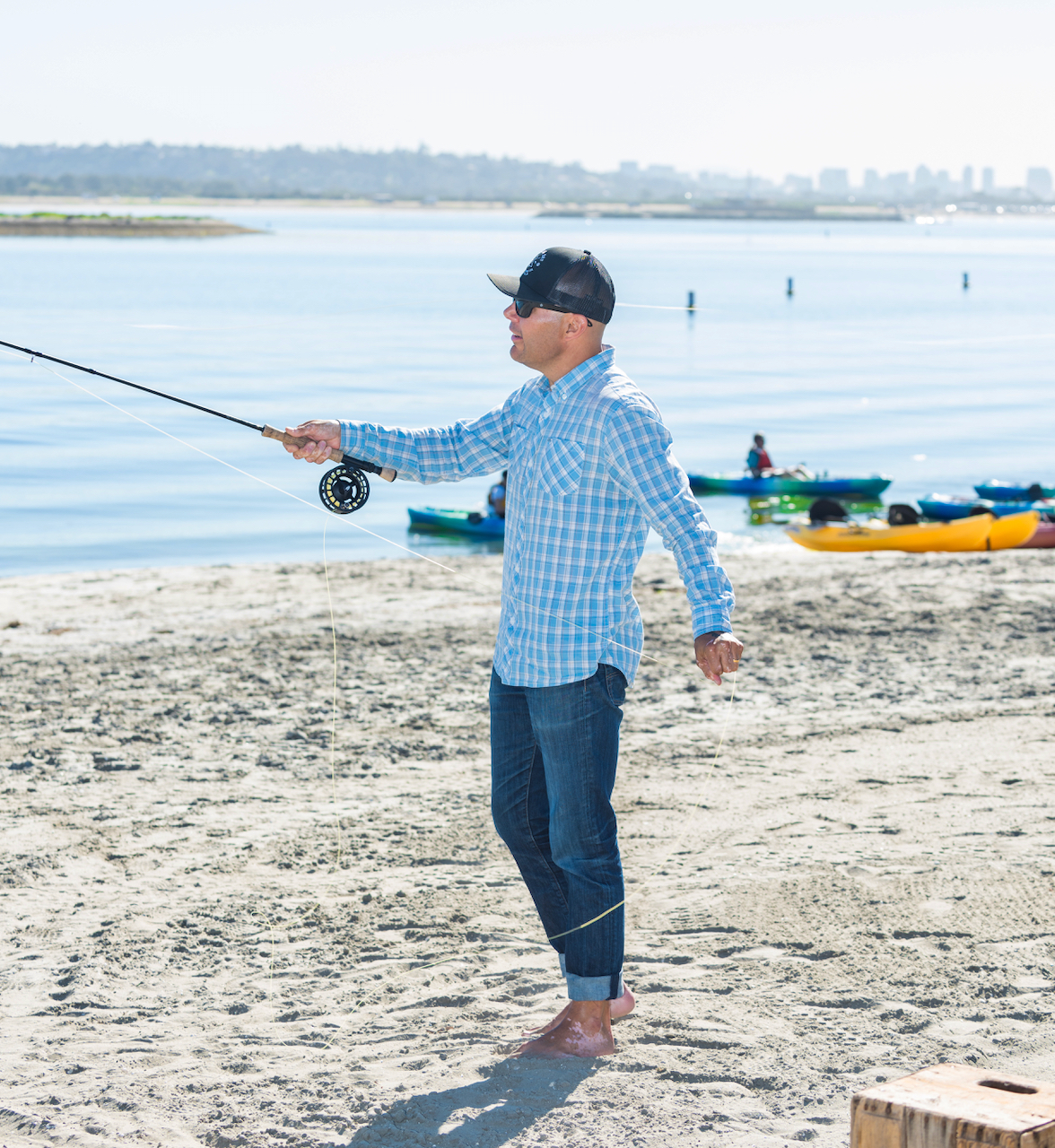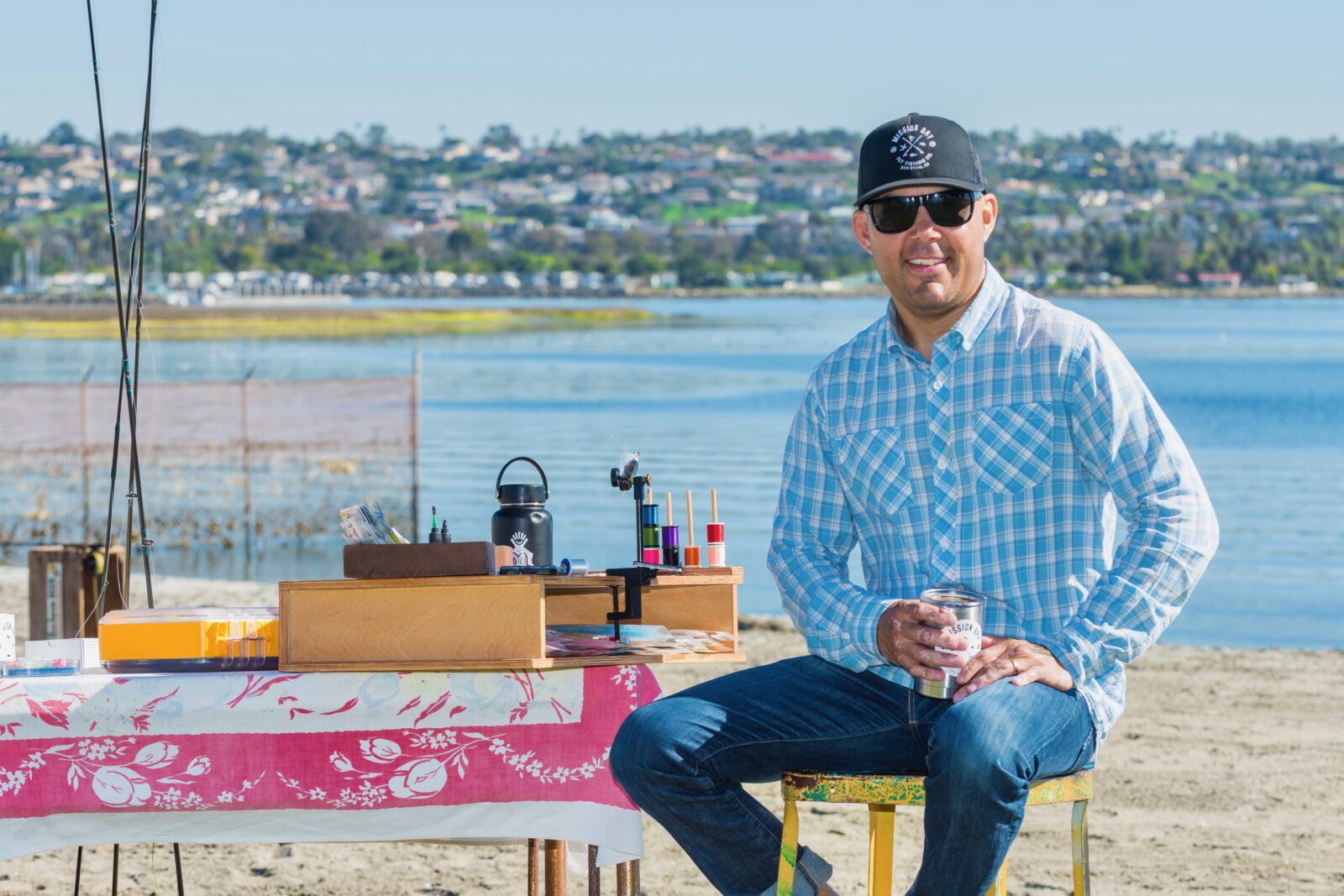In one of my last projects with ReWild Mission Bay before beginning work with WaterWatch of Oregon, I collaborated with long-time ReWild Mission Bay supporter and Mission Bay Fly Fishing Company owner and operator Tyler Vanosdell on this first-person ReWild opinion piece. Many thanks to the San Diego Union-Tribune for at last running this in the Nov. 13, 2023, edition of the paper.
By Tyler Vanosdell with Tommy Hough
Whenever I’m taking a visitor or someone new to San Diego onto Mission Bay, I’m aware I’m providing them with what may be their first impression of our city, and that they’re seeing San Diego in a way few residents have experienced it — on the water, in the midst of what is, for better or worse, the nation’s largest aquatic park.
I’m aware of how much Mission Bay has been modified from its natural state over the last 100 years, but I can’t deny the bay remains an enduring gem, and a special asset we San Diegans are fortunate to call our own. But with that pride of ownership comes responsibility for its care. That’s why the ReWild Mission Bay campaign to restore the historic wetland habitats this area has lost to development over time is so important to me.
As the proprietor of a fly fishing company, ensuring the water of Mission Bay is clean and healthy for fish and other marine habitat is critical to my livelihood. The fish that I make my livelihood from are tied to the surviving wetland habitat we have in Mission Bay; either they’re born there and leave when they’re big enough, or they eat the fish that are born there.
My clients come from around the world — Italy, England, the Czech Republic, Denmark, Mexico, Hong Kong, China, Iran and dozens of other countries. Similarly, visitors from around the U.S. from Maine, Michigan, Florida, Utah and elsewhere come to fish at Mission Bay. Each has their own story of an imperiled body of water near them.
When I hear these stories, I’m reminded of the words of legendary South Florida fly fisherman Sandy Moret, who said, “The weight of humanity is heavy on pretty places.” He couldn’t be more right. There’s a world of biodiverse ecosystems that are under stress in Mission Bay, and that has ripple effects on all the other natural patterns of life in our bay, and beyond.
For those of us who love Mission Bay, our job is to leave it better than we found it. One way we can is by ensuring the water is cleaner, and that we take care of what’s below the surface with as much passion and concern as we do for what’s above.
Sadly, the worst water quality in Mission Bay is found at the mouth of Rose Creek at Campland and in De Anza Cove. Part of the reason for the poor water quality is that the water that currently empties from Rose Creek is rich with toxins and heavy metals picked up along the creek’s channelized route through Pacific Beach, where Rose Creek is managed as a stormwater conduit rather than a natural, cleansing asset of biodiversity.
Nearly 30 years ago, the city’s 1994 Mission Bay Park Master Plan recognized the problem of unhealthy water in this corner of the bay and determined that clean water needed to be a priority. One way to effectively “cleanse” the water in northeast Mission Bay is to restore the green infrastructure that had been doing that job for years before its removal, and is especially designed by nature to remove toxins from water — that is, wetlands.
The unique mixture of fresh water and salt water that facilitated the growth of natural wetlands is still present at the mouth of Rose Creek — that’s why the ReWild Mission Bay wetland restoration campaign is so laser-focused on this priority area. The best opportunity for wetland restoration in Mission Bay is where these conditions already occur, and where they played out for centuries before development saw the removal and destruction of nearly all of Mission Bay’s native salt marsh and wetland habitat.
With the opportunity to restore Mission Bay Park with improved recreation infrastructure and restored habitats that work for all of us, the city must do a better job delivering the clarity and leadership needed to prevent misunderstandings and confusion about the De Anza Natural plan. Those of us who support wetland restoration need to make sure our views are out there too. After all, my business and livelihood depends on the natural habitats in Mission Bay.
We all need clean water, we all need parks to play and recreate in, and we all need to combat climate change and protect our park as best we can from the impacts of sea level rise. Let’s get the decades-long process of wetland restoration underway, and ensure the cleaner water Mission Bay so desperately needs becomes a reality.
This originally appeared in the Nov. 13, 2023, edition of the San Diego Union-Tribune. Photos of Tyler by Greg Hoxsie Photography, © 2020 all rights reserved. Not intended for republication.


